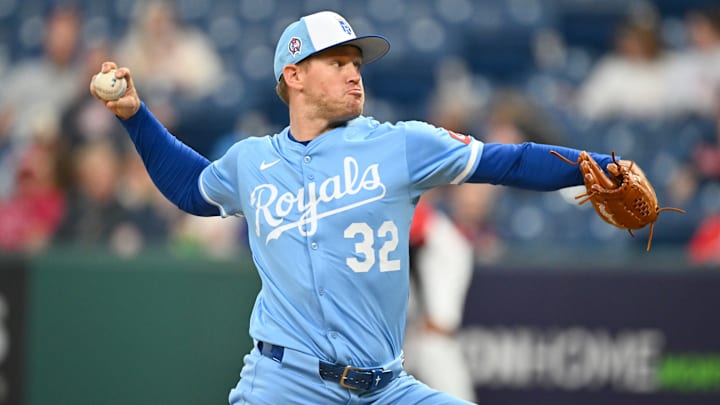The July 31, 2025 deal was a clean needs-for-needs exchange. The Kansas City Royals, thinned out by injuries, targeted immediate rotation stability and got it by acquiring right-handers Stephen Kolek and Ryan Bergert. The San Diego Padres addressed a different roster hole, landing a reliable, controllable starting catcher in Freddy Fermin — a strong defender, a Salvador Pérez mentee, and a clubhouse favorite who fit the Padres’ plan behind the plate. This wasn’t about winners and losers; it was both clubs solving urgent problems with pieces that made sense for their timelines.
Kolek’s résumé at the time of the trade looked like sturdy back-end rotation material: a 4.18 ERA with 56 strikeouts across 79 2/3 innings, plus a complete-game shutout already in his pocket. He projected as the kind of innings-eater the Royals could drop into the calendar without reworking the bullpen every fifth day. That’s precisely why Kansas City moved; not for flash, but for reliability, and it’s exactly the type of profile that can swing a team’s August and September when the schedule compresses and margins shrink.
Former Padres pitcher thrives with Royals as San Diego seeks fifth-starter answers
Since arriving in Kansas City, the results have jumped from steady to sensational. Kolek has posted a 1-1 record with a 1.67 ERA and 19 strikeouts over 27 innings, trimming traffic, getting ahead, and turning starts into quiet nights for the bullpen. Context matters, the slate he’s faced in the AL Central has been gentler than the NL West gauntlet — but you still have to execute, and he has. Bergert has benefitted from a similar dynamic. The bottom line for Royals fans is simple: the rotation asked for competent stability and got a guy pitching like a late-summer hammer.
Quality Kolek. pic.twitter.com/cmw7qscVvF
— Kansas City Royals (@Royals) September 7, 2025
From the Padres’ vantage point, the calculus remains sound even if the timing now stings. They didn’t move Kolek and Bergert without a plan; they made a conscious choice to solidify catching. But since those departures, the back end of San Diego’s rotation just hasn’t broken their way. Nestor Cortes’ stop-and-start availability has complicated fifth-starter decisions, Randy Vásquez has oscillated between promising and unpredictable, and JP Sears has ridden a rollercoaster. None of that invalidates the logic of acquiring Fermin — it only underscores how fragile back-end pitching can be over the grind of a full MLB season.
It’s also fair to note the environment shift. Kolek and Bergert are now operating in a more favorable division and on an overall easier schedule than what San Diego typically draws. That doesn’t diminish their performances; it frames them. If anything, it highlights the Padres’ reality: when your fifth spot is leaking innings in the NL West, it shows up fast in the standings, and it taxes every other part of the roster.
Big picture, this remains a trade where both teams filled real needs. Kansas City found immediate rotation certainty at the exact moment it mattered; San Diego shored up a critical catching position for the present and near future. For Padres fans, the takeaway isn’t regret — it’s urgency. If Cortes stabilizes, if Vásquez strings together quality, and if Sears finds level ground, the fifth spot stops being a nightly coin flip. Until then, Kolek’s post-trade surge will linger as a “what-if” footnote — not because the strategy was wrong, but because baseball rarely cooperates with even the best-laid plans.
